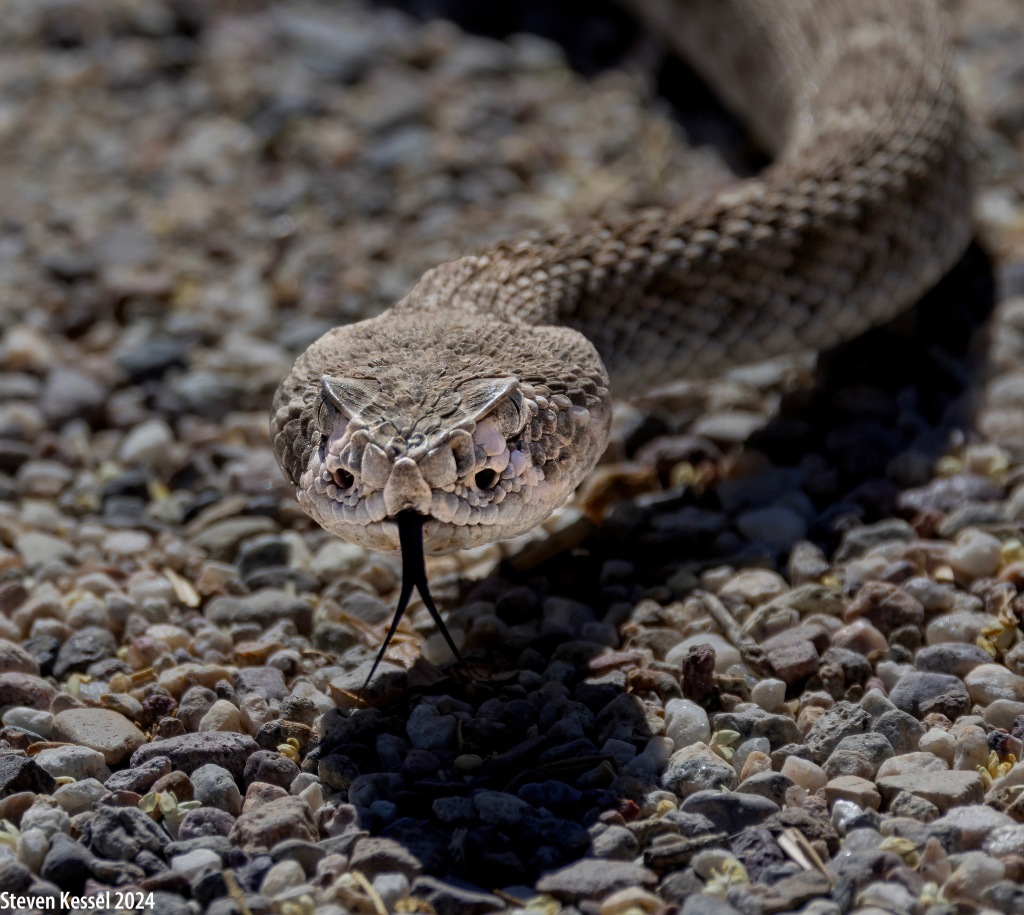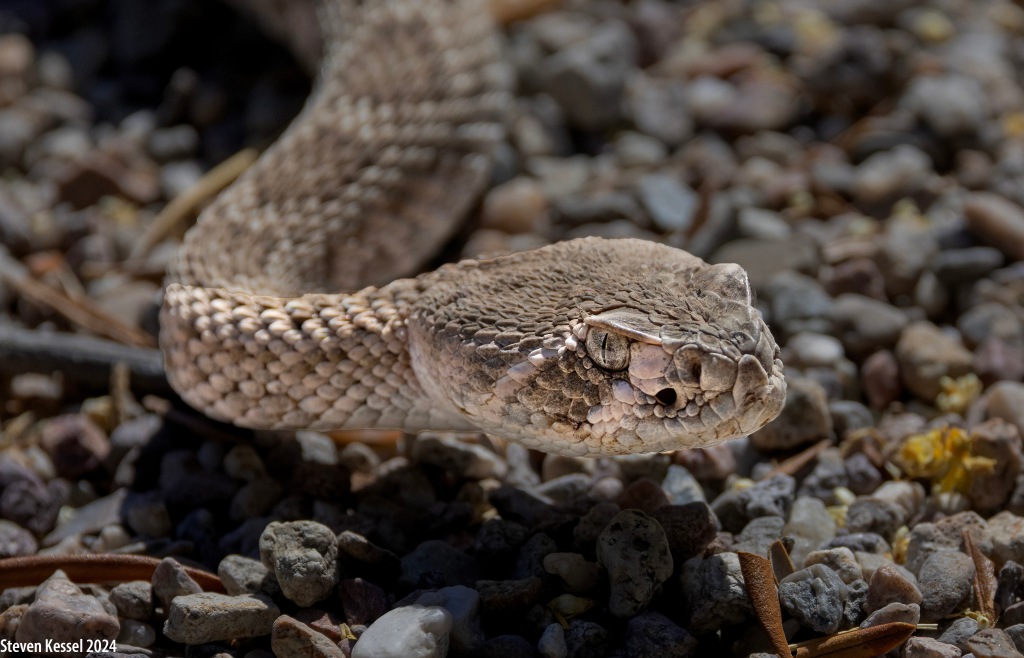You may enlarge any image in this blog by clicking on it. Click again for a detailed view.
Would you believe me if I told you that Western Diamond-backed Rattlesnakes have no interest in attacking humans and are generally not a threat to bite? And that snakebites are actually exceedingly rare? I know, that goes against all of the received wisdom about these highly venomous reptiles, but it’s true.
I thought of this recently when I encountered and photographed a Diamondback in my friend Sam’s yard.

The snake, about a meter long, making it fairly large for one of its species, was in plain view when Sam and I encountered it. Its immediate reaction was to retreat. It rattled briefly when Sam relocated it with a special tool (known as a “snake stick”) but made no attempt to strike. When Sam released it, it headed for some dense brush and quickly disappeared.
That’s typical rattlesnake behavior. Rattlesnakes (there are more than 15 species of them in Arizona) do not view humans as prey or as targets for aggression. They see us as either irrelevant or at worst, potential predators if we interact with them. The typical rattlesnake reaction when it sees a human is either to ignore him or her or to retreat.
Yes, rattlers can bite when provoked, but the emphasis is on “provoked.” And they can be unpredictable. The general rule of safety is: never approach a rattler within its striking distance (about 2/3 to 3/4 of its body length). There is risk associated with being less than 60cm away from a meter-long rattlesnake. Rattlers may not be aggressive but I definitely recommend that one not deliberately provoke one. The snake may consider it provocative if one comes too close.

That said, a human in Arizona has a substantially greater chance of being killed in a motor vehicle accident than being bitten by a rattler.Consider these statistics. Arizona has a permanent population of about 6.3 million. That’s augmented enormously by seasonal residents and tourists. The state records about 40 million visits a year. My community, Tucson, saw about 6 million tourist visits last year. Annually, there are about 300 recorded rattlesnake bites in all of Arizona, and about 120 in Pima County, where Tucson is located. A lot of those bites are the consequence of human stupidity. There is a subset of people who think that it’s cool to mess with a rattlesnake. Alcohol is definitely a factor in that sort of behavior.
So far this year, I’ve had three encounters with rattlesnakes, including the snake in Sam’s yard. I’ll probably see at least 3 or 4 more of them between now and autumn. I will treat each snake that I see with respect. I’ll also look where I put my feet when I walk.
Some of you might wonder how I obtained the closeups of the snake in Sam’s yard. I have a long telephoto lens and I stood at least two meters away from the snake when I photographed it.
Rattlesnakes are almost perfect predators and very beautiful in their own way. They consume a huge number of rats and mice, creatures that collectively pose much more threat to human health and security than the snakes do.
So, if you visit our state and are lucky enough to see a rattler, don’t panic. Just stay out of striking distance. Admire it, photograph it, leave it alone, and you and the snake will be just fine.
Images made with a Canon R5, Canon RF 100-500mm f4.5-7.1 IS L zoom lens, M setting (auto ISO), ISO 800, f7.1 @ 1/3200.
